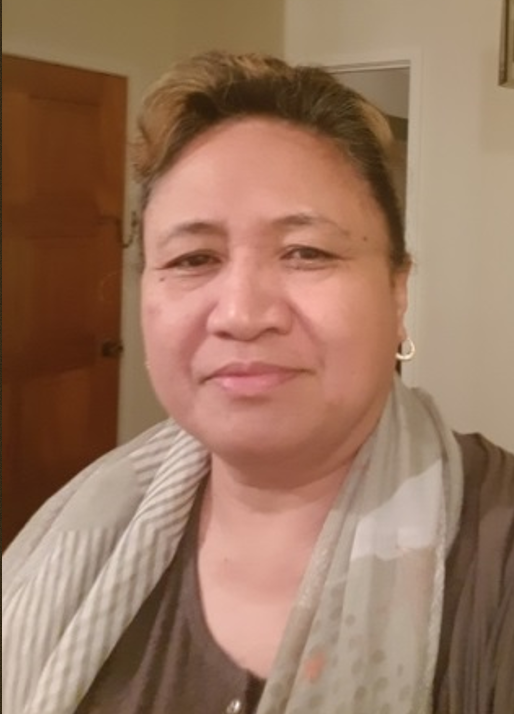
Apia
Our Story
New Zealand’s place is in the Pacific
Even before we had formal ties with the Pacific Islands, we understood that while we were relatively small in global terms, we were not so small when it came to the Pacific and had a unique place in the region.
Today New Zealand engages with the Pacific at multilateral, regional and bilateral levels, with formal diplomatic relations with 14 Pacific Islands. Our histories, cultures, languages, politics and people are intricately intertwined, making our links with the Pacific stronger than those with any other region in the world.
Among our many shared stories is our long-standing and close friendship with Samoa. New Zealand’s period of administration of Samoa is chequered with poor decisions, neglect and tragedy. However, Samoa eventually became the first Pacific country to regain independence, and today the relationship is mature, strong and genuine.
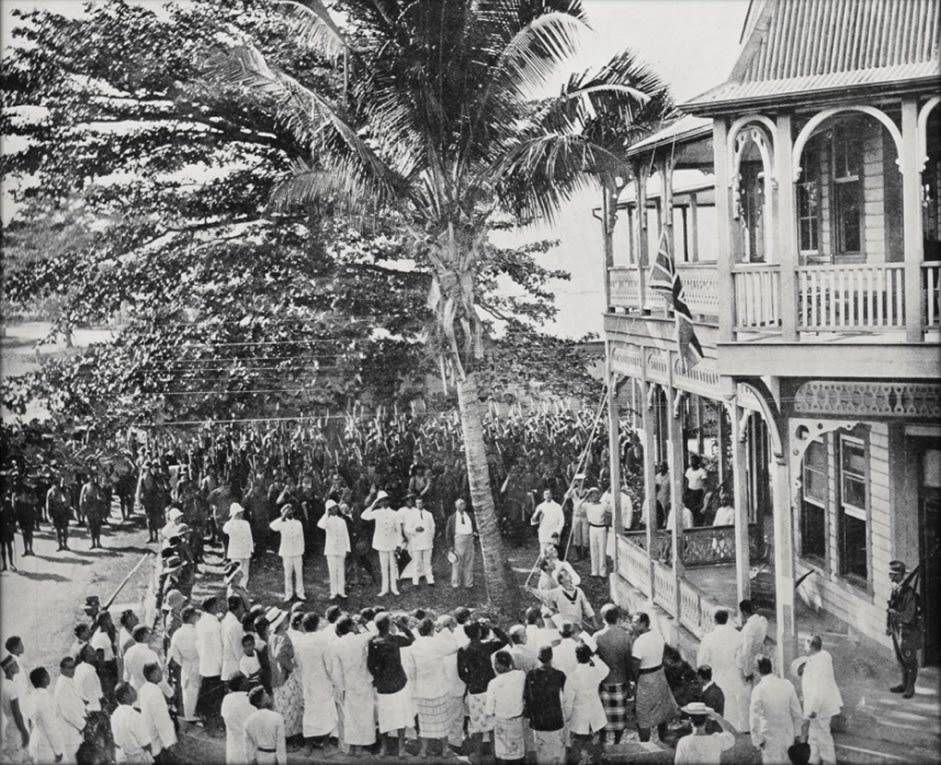
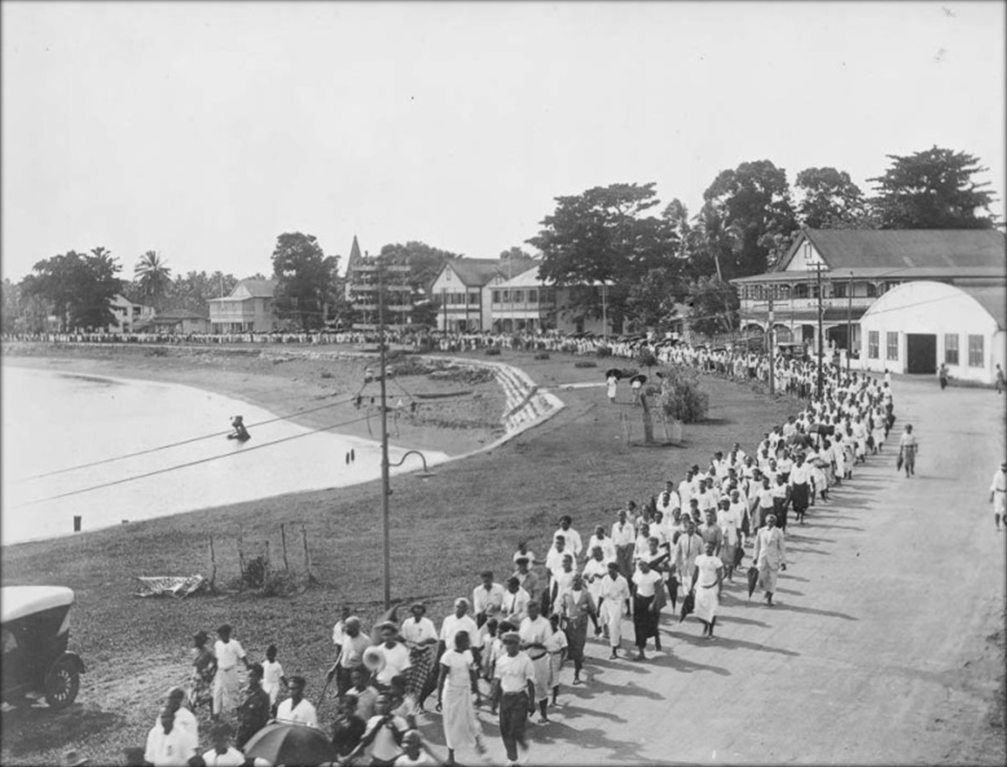
1914-1962: New Zealand takes control of Samoa
New Zealand’s presence in Samoa dates back to the beginning of World War One in 1914, when, at the request of Britain, New Zealand’s Expeditionary Force landed at Apia and took control of Samoa from Germany.
New Zealand’s wartime administration of Samoa was relatively peaceful until 1918, when the failure to quarantine a New Zealand passenger ship resulted in the devastating influenza epidemic which killed an estimated 22% of Samoa’s population. The local resentment that ensued became the foundation for decades of grievances.
In 1920, New Zealand was formally awarded the Class C mandate of Samoa by the League of Nations. Under this mandate, New Zealand sought to develop Samoa, including by establishing modern education and health systems; individualising land holdings; remodelling villages; implementing a tax system; and encouraging participation in regional trade. However, alongside these reforms, traditional and cultural practices were increasingly discouraged. Chiefs who were traditionally leaders in the villages were subjected to the 1922 Samoan Offenders Ordinance, which gave Administrators the power to banish them and remove their titles.
The Mau a Tumua ma Pule resistance movement emerged in response to such moves, passively resisting New Zealand’s rule and slowly but surely disregarding the administration’s policies. Its influence grew quickly as Samoans banded together to promote Samoa mo Samoa (Samoa for Samoans). Viewing the emergence of the Mau as a growing threat to its rule, New Zealand implemented a variety of measures in an effort to suppress the movement, including arresting Mau supporters and sending prominent Mau leaders into exile. Nevertheless, the Mau persisted. In 1929, during a peaceful demonstration by the Mau, a commotion caused when the Mau Secretary resisted police arrest resulted in New Zealand officers firing erratically into the crowd of demonstrators. In the commotion and subsequent gunfire, at least nine people were killed, including a New Zealand policeman and the Mau leader Tupua Tamasese Lealofi III.
It seemed at this point, and in the tumultuous years following, that unrest and discontent would long be prominent features of New Zealand and Samoa’s relationship. However, the election victory of the New Zealand Labour Party in 1935 brought a change of heart. The new government recognised the Mau as a legitimate political organisation and, amongst other measures to repair relations, allowed exiled Mau members to return to Samoa. The controversial Samoan Offenders Ordinance was repealed, and the Mau were encouraged to actively participate in Samoan government.
As the long-held feelings of discontent between the two parties slowly deteriorated, many of New Zealand’s policies, systems and institutions implemented post-mandate, became a necessary and strong foundation for the imminent move to self-government.
Image 1: Germany's loss, Britain's gain: Hoisting the Union Jack at the courthouse Apia on the morning of August 30 1914. Photographer A. J. Tattersall. Courtesy Sir George Grey Special Collections, Auckland Libraries, AWNS-19140917-43-2.
Image 2: Mau parade moving west along Beach Road on`Black Saturday’ 28 December 1929, Apia, Samoa. Photographer A. J. Tattersall.Courtesy Alexander Turnbull Library.
1962: Samoa achieves independence
On 1 January 1962, after almost 50 years of
New Zealand rule, Samoa became the first Pacific nation to achieve independence. A Treaty of Friendship was signed by New Zealand and the new Samoan government, which pledged that relations between the two countries would be governed by a spirit of close friendship, and that both governments would work together to promote the welfare of the people of Samoa.
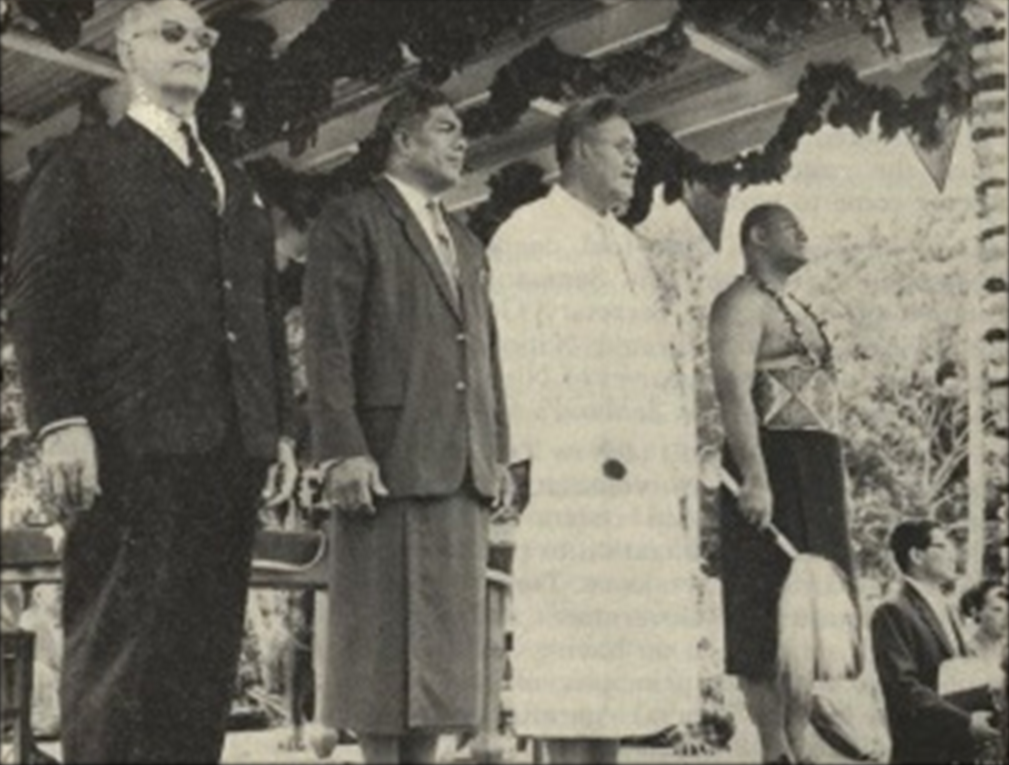
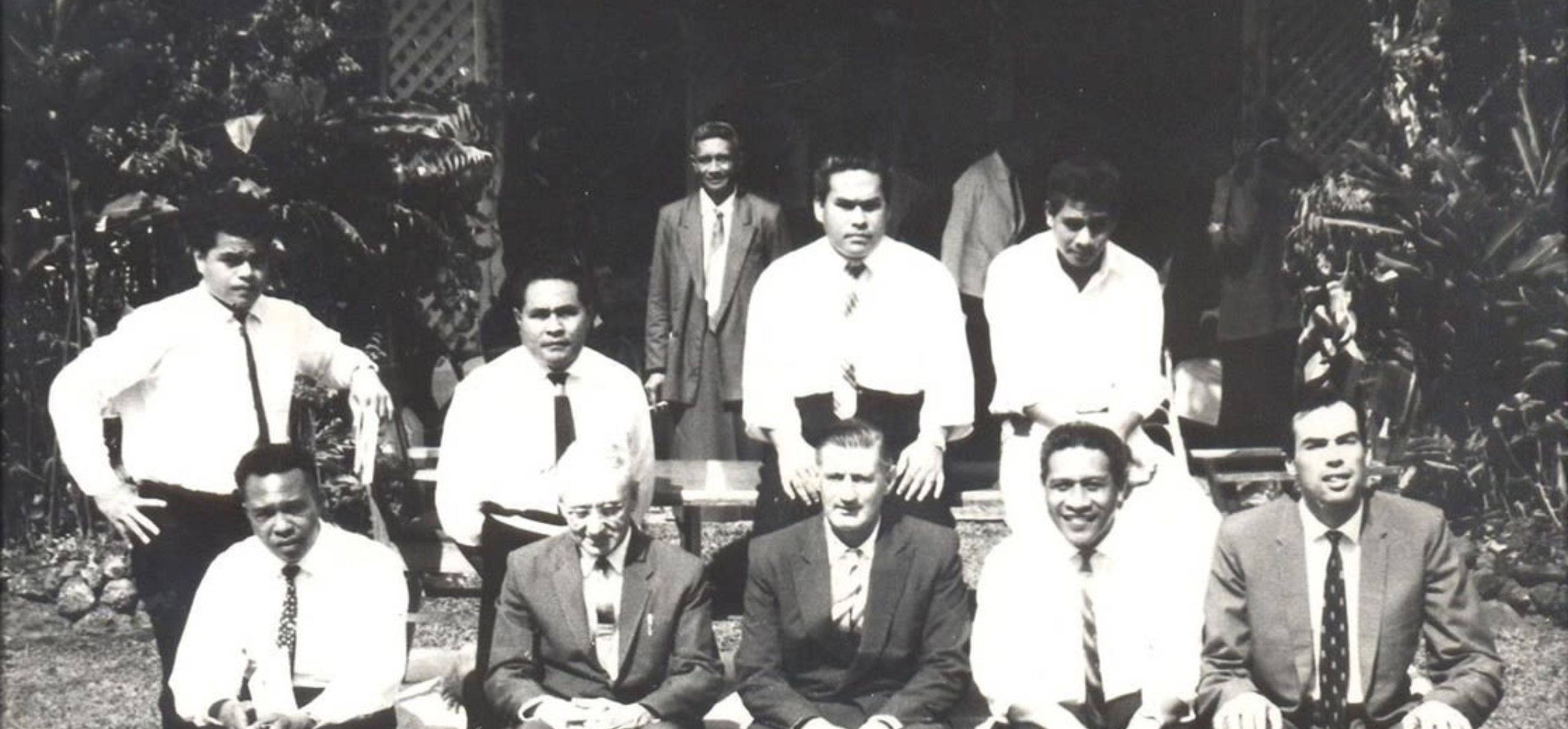
Image above: August 1962: Prime Minister's Office,Western Samoa on the occasion of the signing of the Treaty of Friendship with New Zealand. Front row: Gulati, Eddie Stehlin, P.S. to PM Mata'afa, Ash Levestam, Secretary to Government, Maulolo, AdministrationOfficer and David McDowell, Foreign Affairs Advisor to Prime Minister Mata'afa.
A diplomatic post and an apology
At independence, New Zealand’s role in Samoa moved from trusteeship administrator to diplomatic post, initially set up to service the Treaty of Friendship. Up until 1976, New Zealand was the only resident diplomatic mission in Apia.
In 2002, New Zealand Prime Minister Helen Clark offered a ‘formal apology’ at Samoa’s 40th anniversary of independence celebrations for “injustices arising from New Zealand’s administration of Samoa … and to express sorrow and regret for those injustices”. In response, Samoa gifted the Le Ageagea o Tumua fine mat, which symbolizes “love, death, remorse and forgiveness between kin”. The symbolic end of a difficult chapter was warmly embraced by both governments.
Today New Zealand and Samoa’s relationship is strong and multifaceted. Our people are closely linked, with a large Samoan diaspora in New Zealand and a high number of New Zealand agencies active in Samoa. The depth and breadth of our links extend through church, government, families, sport, education, medicine, culture, film and business, and we share heroes in almost every aspect of society. Connections between the two countries are enhanced by robust policies relating to immigration and seasonal work. With more than 144,000 Samoans living in New Zealand, remittances contribute significantly to Samoa’s economy.
New Zealand and Samoa work collaboratively to support Samoa’s own development aspirations, as well as influence regional and global issues. Development assistance New Zealand provides includes support to respond and recover from natural disasters, improve human development outcomes and boost economic development.
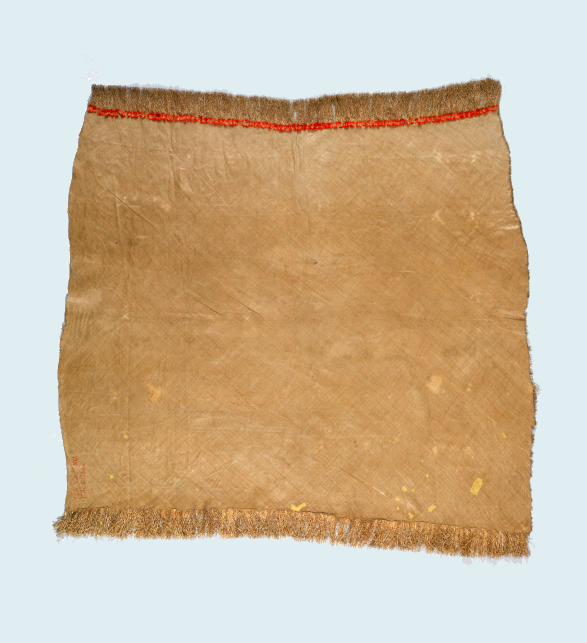
New Zealand’s Post through the eyes of Nana Anae
In 2017, the New Zealand High Commission said goodbye to its longest serving staff member, Nana Anae. Nana was employed at the High Commission from 1991 to 2017, and, in her time, saw ten High Commissioners serve in Samoa. She entered as a receptionist, and moved into a Consular/Passport Officer role before taking up the position as Senior Consular/Citizenship Adviser in 1997, a role she held until her resignation in 2017. In 1991, the High Commission office was set up across two floors: local staff including New Zealand immigration were on the ground floor; seconded staff, which then consisted of a High Commissioner, Deputy High Commissioner, New Zealand Aid Manager and a Scholarship Officer, were on the second.
During the course of almost 26 years, the High Commission became a part of Nana’s family and vice versa. She felt the strong team dynamic, fostered by excellent High Commissioners, made Apia Post very special. Nana’s fondest memories feature moments when the team pulled together to make something big happen. Nana saw the High Commission go through many changes, such as the opening of a new Chancery in 2002. She has also experienced many significant events in the bilateral relationship, including Samoa’s hosting of the All Blacks in 2015.
In Post operations, the one person who inspired Nana most was Tiffany Acton, who is the current Administration Manager at Post. Tiffany made hugely positive contributions to enhance the efficiency of Post operations, including improving the organisation of the office.
In Samoa, there is a certain sense of status attained by working for a foreign government. Nana was very proud to be working at the High Commission, and her family and village held her in high esteem because of her job. She always felt motivated to go to work. Her experience throughout her career was very positive, and filled with many good memories.
Upon her departure in June 2017, Nana reflected on how much the Chancery had changed since she’d first started:
“The physical connectedness of the Post and warmth and friendliness of the staff truly makes it feel like you’re part of a big family.”
Image: Nana Anae served at the New Zealand High Commission in Apia from 1991-2017. Credit: Nana Anae
